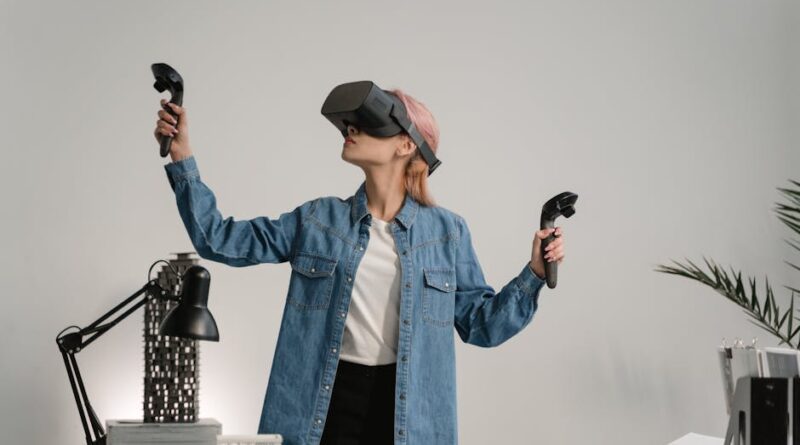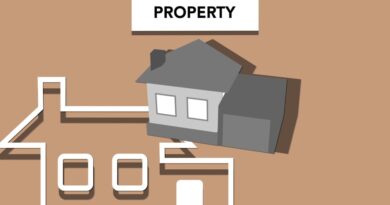The Rise of Virtual Reality in Real Estate
Imagine being able to walk through a potential new home without leaving your couch. Picture exploring every nook and cranny of a property, from the comfort of your current living room. Thanks to the advancements in technology, this scenario is not just a far-fetched dream but a rapidly growing reality. Virtual reality (VR) has revolutionized the way we experience the world around us, and its impact on the real estate industry is nothing short of transformative. In this article, we will delve into the rise of virtual reality in real estate, exploring its applications, benefits, challenges, and the future it promises.
The Evolution of Virtual Reality
The concept of virtual reality dates back to the 1950s, with the development of the first flight simulator by Philco Corporation. However, it wasn’t until the late 20th century that VR technology began to gain momentum, particularly with the launch of commercial VR headsets in the 2010s. Today, virtual reality has found its way into various industries, including gaming, healthcare, education, and of course, real estate.
Real estate has always been a visually-driven industry, relying heavily on images and videos to showcase properties to potential buyers. Virtual reality takes this visual experience to a whole new level, allowing users to immerse themselves in a property as if they were physically present. By putting on a VR headset, individuals can explore every room, check out the view from the balcony, and even get a sense of the neighborhood all without setting foot inside the actual property.

By Jakub Zerdzicki via Pexels
The Benefits of Virtual Reality in Real Estate
The integration of virtual reality in real estate comes with a plethora of benefits for both buyers and sellers. One of the most significant advantages is the ability to offer virtual property tours, saving time and resources for all parties involved. Potential buyers no longer need to schedule multiple in-person viewings or travel long distances to see a property. With VR technology, they can take a virtual tour of multiple properties within minutes, from anywhere in the world.
Virtual reality also enhances the buying experience by providing a more immersive and interactive way to explore properties. Users can move around a space, zoom in on details, and get a true sense of the scale and layout of a property. This level of engagement can help buyers make more informed decisions and feel more confident about their choices. Additionally, VR tours can attract a wider audience of potential buyers, including international clients who may not have the means to visit in person.
For sellers and real estate agents, virtual reality offers a competitive edge in a crowded market. Properties showcased through VR tend to stand out from the crowd and leave a lasting impression on potential buyers. This can lead to faster sales, higher property values, and increased customer satisfaction. Virtual reality can also streamline the sales process by pre-qualifying leads and reducing the number of physical showings, saving time and resources for all parties involved.

By Czapp Árpád via Pexels
Current Applications of Virtual Reality in Real Estate
The use of virtual reality in real estate has expanded rapidly in recent years, with various applications catering to different needs and preferences. One of the most common uses of VR in real estate is for virtual property tours. These tours allow users to navigate through a property in a 360-degree view, giving them a sense of space and layout. Virtual staging is another popular application, where empty properties are filled with virtual furniture and decor to help buyers visualize the potential of a space.
Virtual reality is also being used for architectural visualization, allowing developers and designers to create virtual models of properties before they are built. This not only helps in the planning and design phases but also allows clients to experience a property before it even exists. Additionally, VR technology is being used for remote property viewing, enabling buyers to explore properties in different locations without leaving their homes.
Another innovative application of virtual reality in real estate is for off-plan sales. Developers can create virtual models of properties that are still in the planning or construction phase, allowing buyers to see the finished product and make informed decisions before the property is even completed. This can help developers sell units faster and at higher prices, as buyers can visualize the end result and understand the layout and design of the property.

By John Lee via Pexels
The Future of Virtual Reality in Real Estate
As virtual reality technology continues to evolve, the future of VR in real estate looks promising. One of the key trends is the integration of augmented reality (AR) with virtual reality, creating a mixed reality experience for users. This combination allows users to overlay digital information onto the real world, providing a more interactive and engaging experience. AR can be used for virtual property tours, interactive floor plans, and even virtual neighborhood explorations.
Another exciting development is the use of 3D modeling and scanning technology to create highly realistic virtual environments. These 3D models can capture every detail of a property, from the texture of the walls to the lighting in each room. This level of realism can significantly enhance the virtual experience for users, making them feel like they are actually walking through a property in person.
Virtual reality is also being integrated with other emerging technologies, such as artificial intelligence (AI) and blockchain, to create more intelligent and secure real estate transactions. AI can help analyze user behavior and preferences to personalize the virtual experience, while blockchain technology can ensure secure and transparent property transactions. These advancements can revolutionize the way real estate deals are conducted, making them more efficient, transparent, and customer-centric.

By Kate Trysh via Pexels
Challenges and Controversies
Despite its many benefits, virtual reality in real estate also presents some challenges and controversies. One of the main concerns is the cost associated with creating high-quality VR content. Developing virtual property tours, 3D models, and interactive environments can be time-consuming and expensive, especially for smaller real estate agencies or independent sellers. Additionally, not all users may have access to VR headsets or the technical know-how to use them, limiting the audience for VR content.
Another challenge is the potential for misrepresentation or manipulation of properties through virtual reality. Since VR allows for a highly immersive and customizable experience, there is a risk that sellers may exaggerate or enhance certain features of a property to make it more appealing to buyers. This can lead to false expectations and disappointment when buyers visit the property in person and find it doesn’t match the virtual experience.
Expert Opinions
According to real estate experts, virtual reality has the potential to revolutionize the industry by providing a more engaging and interactive way for buyers to explore properties. Virtual tours can save time and resources for both buyers and sellers, leading to faster sales and higher customer satisfaction. However, experts also caution that virtual reality should be used as a complement to traditional real estate practices, rather than a replacement. In-person viewings and personal interactions are still essential for building trust and making informed decisions in real estate transactions.
Conclusion
As we have seen, virtual reality is reshaping the way we experience real estate, offering a more immersive, interactive, and convenient way to explore properties. From virtual property tours to 3D modeling and augmented reality, VR technology is revolutionizing the buying and selling process, making it more efficient, engaging, and customer-centric. While there are challenges and controversies surrounding virtual reality in real estate, the potential for growth and innovation in this field is undeniable. As technology continues to advance, we can expect virtual reality to play an increasingly prominent role in the future of real estate.
So, whether you’re a buyer looking for your dream home or a seller trying to showcase your property, virtual reality offers a new and exciting way to experience the world of real estate. Embrace the future of virtual reality in real estate and take your next property journey to new heights.




